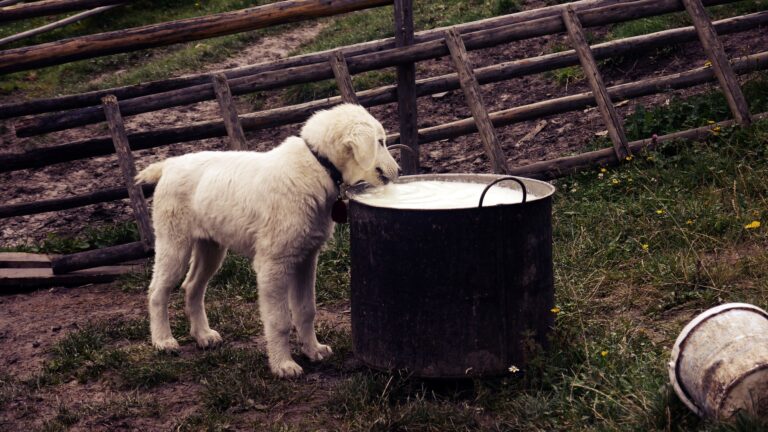As dog owners, we’re accustomed to our furry companions having healthy appetites. So, when our dogs suddenly refuse to eat or show a decreased interest in food, it can be concerning. In this article, we’ll explore common reasons why your dog may not be eating and provide practical steps to help stimulate their appetite and ensure their well-being.
Reasons Your Dog May Not Be Eating:
- Health Issues, let’s delve deeper into the potential health issues that can affect your dog’s appetite:
Dental Problems: Gum Disease: Gum disease, also known as periodontal disease, is a common dental issue in dogs. It can cause inflammation, pain, and infection in the gums, making it painful for your dog to chew and eat. Signs of gum disease include bad breath, swollen or bleeding gums, and difficulty eating hard food.
Tooth Decay: Just like humans, dogs can experience tooth decay or cavities. Decayed teeth can be painful, especially when they come into contact with food. Your dog may avoid eating due to the discomfort.
Broken Teeth: Broken or fractured teeth can expose sensitive nerves and cause severe pain when your dog bites down on food. If your dog suddenly stops eating hard or crunchy foods, it could be a sign of a broken tooth.
Digestive Problems: Upset Stomach: Dogs can experience upset stomachs due to various reasons, such as dietary indiscretion (eating something they shouldn’t have), abrupt diet changes, or consuming spoiled food. An upset stomach can lead to nausea, vomiting, diarrhea, and a reluctance to eat.
Indigestion: Indigestion occurs when your dog’s digestive system struggles to break down food properly. This can result from eating too quickly, overeating, or consuming foods that are challenging to digest. It may cause discomfort, leading to reduced appetite.
Gastrointestinal Issues: More severe gastrointestinal problems, such as gastritis, inflammatory bowel disease (IBD), or infections, can cause chronic digestive discomfort and a long-term loss of appetite.
Illness: Bacterial or viral infections can cause a range of symptoms in dogs, including fever, lethargy, and a decreased appetite. Infections may affect your dog’s overall well-being, leading to a loss of interest in food.
Chronic Diseases: Chronic conditions such as kidney disease, liver disease, diabetes, or cancer can impact your dog’s appetite. These diseases can alter metabolism, increase the risk of nausea, or cause discomfort that interferes with eating.
Medication Side Effects: Some medications prescribed to dogs may have side effects that include a loss of appetite. It’s essential to discuss potential side effects with your veterinarian when starting a new medication. Your vet can offer strategies to manage appetite while your dog is on medication or explore alternative treatment options if necessary.
In all these cases, if you suspect that a health issue is causing your dog’s loss of appetite, it’s crucial to consult your veterinarian promptly. A professional evaluation can help identify the underlying problem and guide appropriate treatment to alleviate any discomfort, restore your dog’s appetite, and ensure their overall well-being.
- Behavioral Factors:
Stress or Anxiety: Changes in the environment, routine, or new experiences can stress your dog and impact their eating habits.
New Diet: If you’ve recently changed your dog’s food, they may be hesitant to try the new diet.
Fussy Eater: Some dogs are naturally picky eaters and may skip meals if they don’t like the food.
- Environmental Factors:
Temperature: Hot weather can decrease your dog’s appetite. Conversely, cold weather might make them want to conserve energy rather than eat.
Food Location: Ensure your dog’s feeding area is clean, quiet, and free from distractions.
Steps to Encourage Your Dog to Eat:
- Consult Your Veterinarian: If your dog’s loss of appetite persists for more than a day or is accompanied by other concerning symptoms, consult your veterinarian. It’s essential to rule out any underlying health issues.
- Ensure Dental Health: Regular dental check-ups and cleanings can help prevent dental issues. Brush your dog’s teeth or provide dental chews to maintain oral hygiene.
- Offer a Palatable Diet: If your dog is being fussy about their food, consider offering different varieties or flavors to find one they prefer. Mixing in wet food or adding a small amount of low-sodium broth can make meals more enticing.
- Keep a Consistent Feeding Schedule: Establish a routine feeding schedule to help your dog anticipate meal times. Avoid leaving food out all day, as this can reduce the novelty of mealtime.
- Monitor Environmental Factors: Ensure your dog’s feeding area is calm, clean, and free from disturbances. Adjust the temperature if necessary to make them more comfortable during mealtime.
- Reduce Stress: Identify and address sources of stress or anxiety in your dog’s environment. Provide a safe and secure space for them to eat.
- Gradual Diet Changes: When transitioning to a new diet, do so gradually by mixing the new food with the old over several days to help your dog adjust.
- Offer Smaller, Frequent Meals: Instead of one or two large meals, consider offering smaller, more frequent meals throughout the day.
- Consult a Professional Trainer or Behaviorist: If your dog’s appetite issues are related to behavioral factors, seek guidance from a professional dog trainer or behaviorist.
Conclusion: A dog not eating can be a cause for concern, but it’s essential to approach the situation systematically. By understanding potential reasons for appetite loss and taking steps to address them, you can help your dog regain their appetite and ensure their overall well-being. Remember that your veterinarian is your best resource for diagnosing and addressing any underlying health issues, so don’t hesitate to seek their advice if your dog’s appetite loss persists.


